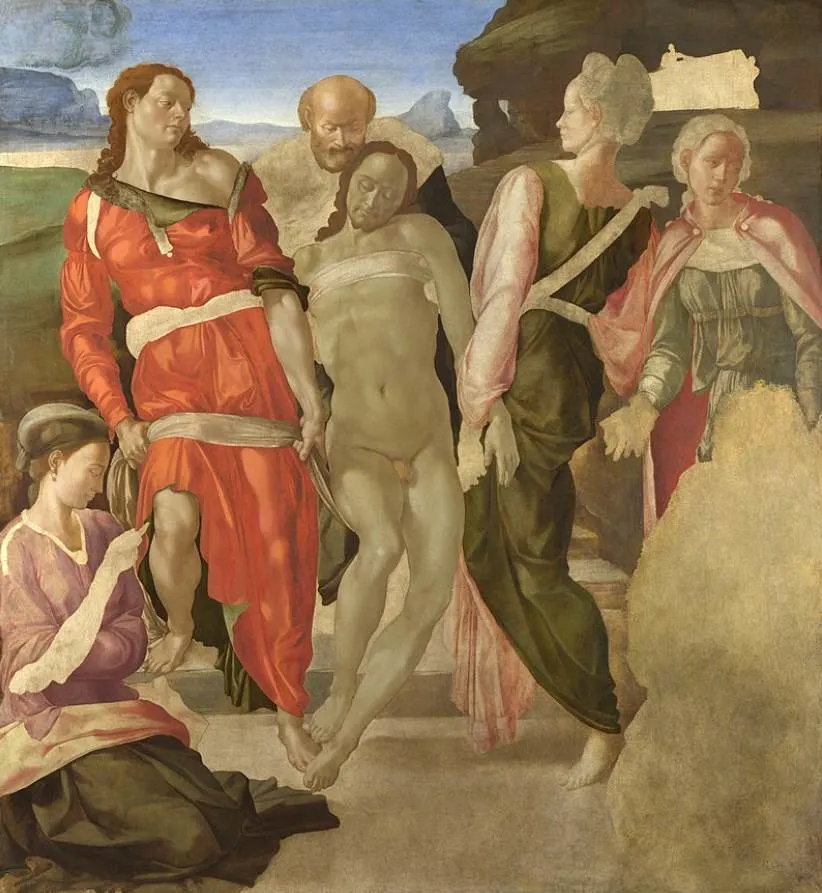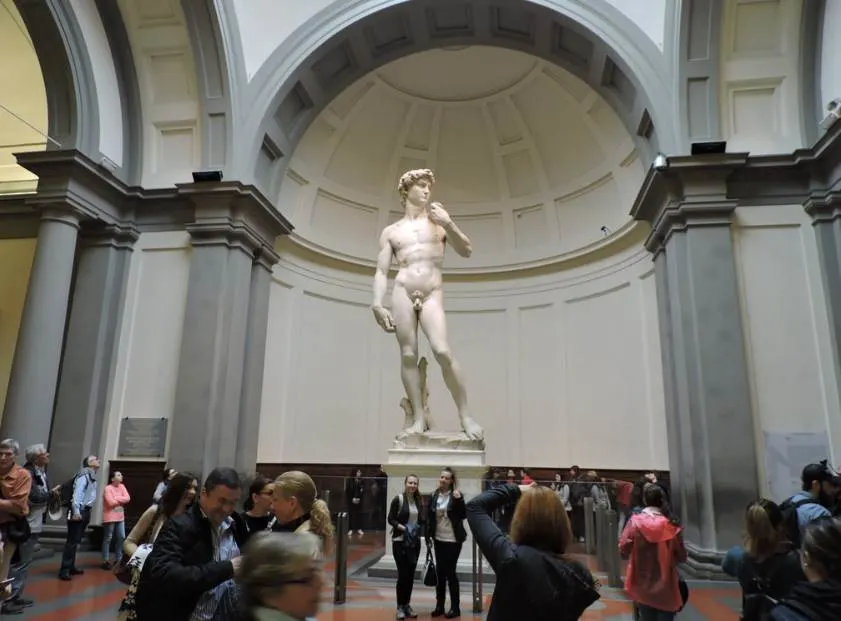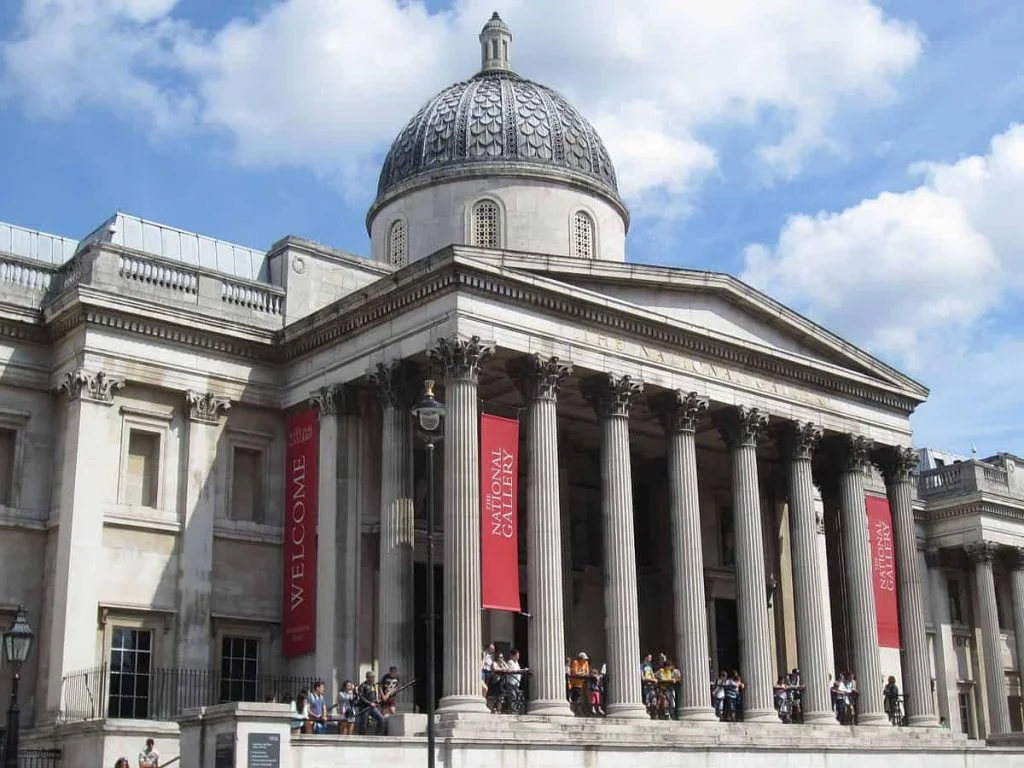One of the most amazing facts about many artists from the Renaissance is that they excelled in various fields.
Even more fascinating is that many of them produced amazing works of art at the same time. This brief period in art history happened in the early 16th century and is known as the High Renaissance.
Michelangelo Buonarroti (1475-1564) was one of the greatest Renaissance sculptors of his time, but he was also an architect and a painter.
In this article, we’ll take a closer look at some of the most interesting facts about The Entombment, one of only a handful of paintings by Michelangelo.
1. It was painted in the first years of the 16th century
The High Renaissance started in the mid-1490s and that was a time when Michelangelo was in his early twenties.
There are no portraits of the man from this period so we can only have a visual representation of him when he was already an old man.
He was, however, already a Renaissance man who mastered multiple skills. He is best known as a sculptor but also earned commissions for paintings.
Some of his most famous works are the frescoes inside the Sistine Chapel in Rome which include The Creation of Adam and The Last Judgement.
He worked on the Entombment between 1500 and 1501, a time when he was living in Florence. He spent most of the 1490s in Bologna, Florence, and Rome.

2. It depicts the burial of Jesus Christ but it remained unfinished

I said that he “worked” on this painting between 1500 and 1501 and that’s because he somehow didn’t manage to complete it.
It is, however, clear that it depicts a scene in which the dead body of Jesus Christ is being lifted up a flight of stairs following his crucifixion.
His body is being dragged to the sepulcher, a small room that was carved into the rocks which served as his final resting place before his resurrection.
The blank area in the rocks in the top right corner of this unfinished painting was supposed to depict this burial chamber.

3. There’s a special reason why Michelangelo abandoned this work
So why didn’t Michelangelo complete this painting? After all, he was a young and prolific artist who was still trying to make a name for himself.
Abandoning this project was probably the best decision that the Italian artist ever made because he earned a far more prestigious commission in 1501.
He was asked to complete a seemingly impossible task that was started 40 years earlier by a Florentine sculptor named Agostino di Duccio (1418-1481).
3 years later, Michelangelo presented the Statue of David which he had carved out of a solid block of Carrara marble. They later found out that it was too heavy to lift to the roof of Florence Cathedral for which it was commissioned.
Michelangelo presumably left The Entombment unfinished to look for a suitable block of marble to carve this amazing sculpture.

4. It was probably commissioned to decorate a funerary chapel in Rome
Many art historians remained skeptical about the attribution to Michelangelo until a document was found in 1981.
It mentioned that Michelangelo had earned a commission to decorate the funerary chapel of Giovanni da Viterbo, the bishop of Crotone who had passed away.
This funerary chapel was located inside the Church of Sant’Agostino in Rome. This would have been a suitable location for a painting depicting the entombment of Jesus Christ.
The composition highlights the figures from the left and the dimensions of the work also match the description.

5. The identity of the other figures remains uncertain
Only Jesus Christ has been positively identified and the identity of the other figures is still up for debate. Below is an overview of who might be depicted:
- The kneeling woman in the bottom left corner is likely one of the Three Marys, presumably Mary Magdalene.
- The long-haired man on the left of Jesus wearing red clothes is possibly Saint John the Baptist.
- The older man behind Jesus is either Joseph of Arimathea, the man who gave the tomb to Jesus, to Nicodemus, the man who helped during the burial.
- The two figures on the right might be the other of the three Marys, Mary of Clopas and Mary Salome. The large blank area might have been reserved for the Virgin Mary.

6. The composition of the painting was uncommon but had been done before
The Entombment of Jesus Christ was a popular subject in Christian art, especially for the purpose of serving as an altarpiece for funerary chapels.
Caravaggio’s painting and Rubens’ painting are some of the greatest examples of Baroque paintings that depict this event.
Michelangelo’s composition depicts Jesus Christ vertically while most other works depict him being carried horizontally.
It’s likely that the Renaissance master was inspired by earlier versions, including the predella of the San Marco Altarpiece (1438-1440) by Fra Angelico and another version completed in 1495 by the workshop of Domenico Ghirlandaio.

7. How big is The Entombment by Michelangelo?
The size of this painting makes it likely that it was commissioned to decorate the wall of a funerary chapel.
The Entombment by Michelangelo is a medium-sized oil on panel painting that has dimensions of 161.7 × 149.9 centimeters (63.7 × 59 inches).

8. Where is the painting located today?
The history of the painting was rather obscure until it surfaced in the Farnese Collection in Rome in the 1650s. It didn’t stay there and switched hands multiple times over the centuries.
It was purchased by a Scottish artist named Robert Turnbull Macpherson (1814-1872), a man who lived and worked in Rome at the time.
Today, the painting is part of the collection of the National Gallery in London and has been since the museum acquired it in 1868.
Remarkably, just like the Manchester Madonna which is also part of the museum’s collection, both works were officially attributed to the “Master of the Manchester Madonna.” This was, in fact, Michelangelo all along.

